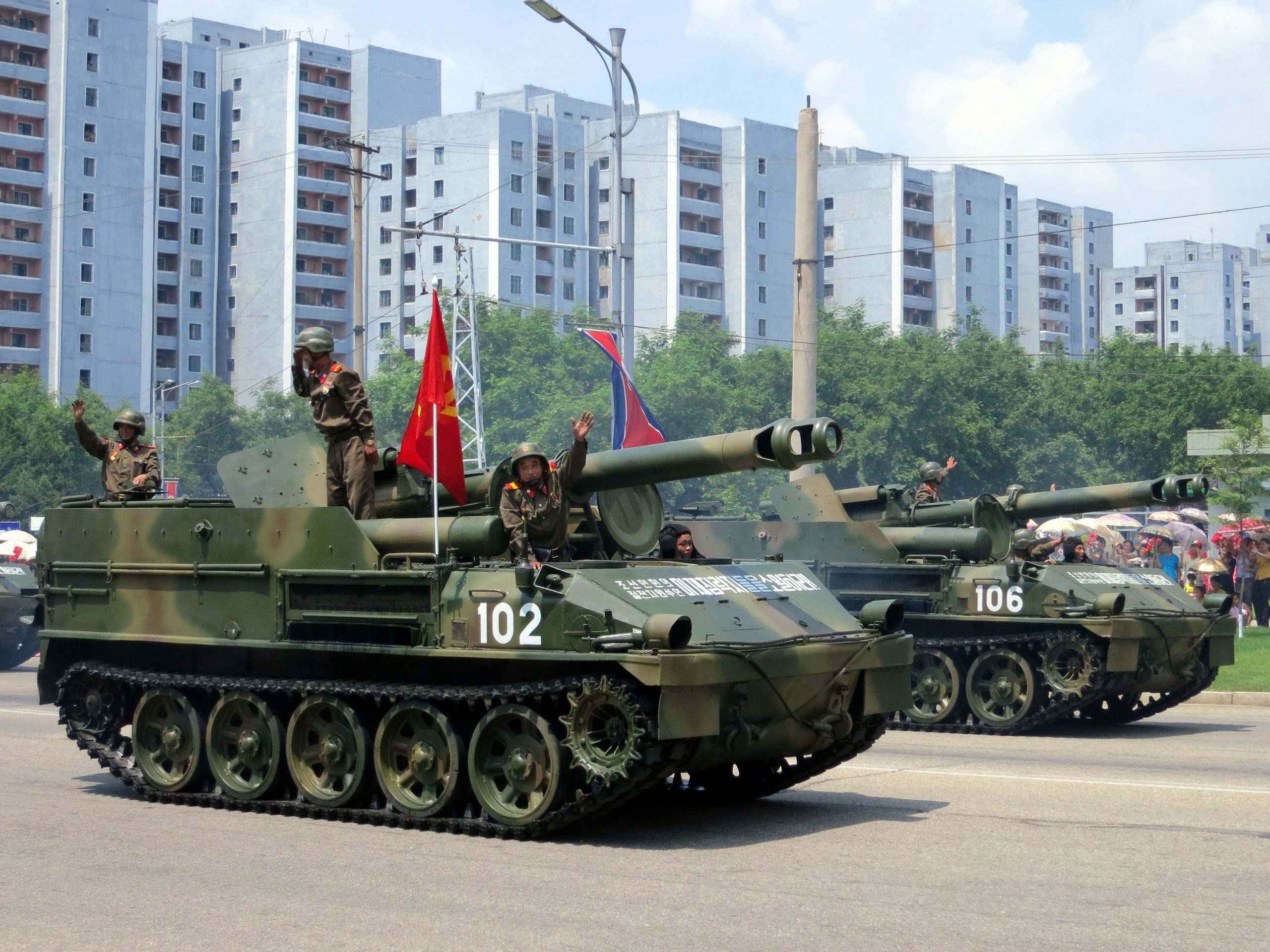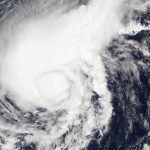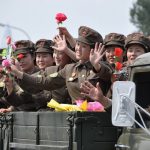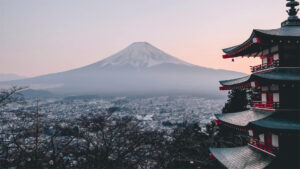I’ve been in the foreign affairs, intelligence, analysis and context business for two decades now, and there are few things that annoy me more than North Korea.
It is a small, perennially poor, backwards and deliberately dysfunctional regime. Its economic heft is below negligible. It could not sustain a hot war for more than a few days as its entire population has lived on insufficient rations for years, its military equipment was antiquated thirty years ago, and all its fuels are imported so its military has little staying power. It couldn’t win a military conflict with any of its neighbors. It is so politically isolated that it simply cannot shape anything in any sphere beyond its immediate region.
North Korea is in such a sad state that its strategic policy has no real tools other than bluff and propaganda, and I don’t have a lot of respect for blowhards – particularly when they never back up their words with action – and North Korea is perhaps the most blowhardy country in the history of language. To give you an idea of just how strongly I feel about North Korea’s lack of strength, my brother is of South Korean descent and I don’t believe he has been in one whit of danger in all these past four years he’s been living in South Korea.
And then there’s the strategic angle. During the Cold War the Americans committed themselves to protecting the territories and economies of all the allies – of which South Korea was one – in order to form a cordon sanitaire around the Soviets. A large military presence in South Korea was part of that process. But the Cold War is long over, the Americans are getting out of the global management business, and the ongoing American military footprint in South Korea is the very definition of policy inertia. The inter-Korean border may still be a flashpoint, but it is no longer a flashpoint that serves any broader strategic purpose for the United States. For the Americans it is exposure and risk without any conceivable benefit, and it is high time for the American military position in the region to shift – and shift sharply.

And that despite all the nuclear bric-a-brac. Yes, the nuclear question for North Korea is a big one, and honestly it is the only reason that Washington should care about the country at all. But even here, I’m not impressed. My lack of concern falls into two general categories.
First, the technicalities of a nuclear program.
A nuclear weapons program isn’t easy, but the easiest part is building the explosive device itself. Obtaining the uranium, turning it into weapons grade uranium or plutonium, building an implosion device to trigger a runaway atomic explosion – this was all first done in the 1940s and to think a people as inventive as the Koreans (North and South) couldn’t achieve nuclear fission is simply silly. The NorKs did so back in the 1990s and there is no recapturing that genie.
But that’s only the first step. Now you need to deliver it. Back in World War II the Americans delivered the Hiroshima and Nagasaki nukes by high-altitude bomber – something that was possible because of the lack of surface-to-air missile defenses and absolute American mastery of islands near Japan. That option is firmly off the table for the NorKs as the United States is far too distant and far too militarily advanced for a large, slow moving aircraft to penetrate its defenses.
That leaves missiles. The obvious obstacle is range. The NorKs can currently claim accurately to be able to strike in the vicinity of Hawaii and ongoing experiments with missiles are clearly aiming for the American mainland. That is likely some time off still, but in years – not decades. It may (literally) be rocket science – and remain one of the most technically challenging military fields – but the NorKs have been working on this very hard for a very long time.
Yet even a sufficiently-ranged and designed missile isn’t enough, because a missile cannot carry a big, bulky, delicate device. Primitive nuclear devices weigh tons, and rockets can only carry hundreds of pounds. There’s also the massive issue of reentry. Falling from orbit makes everything more than a bit shaky, which is more than enough to break into irrelevance a newbie nuke.
And of course, it would be nice to actually hit your target. Early ballistic missiles were notoriously inaccurate. There’s a reason NASA – not only the world’s best rocket nerds as well as the nerds with the greatest interest in accuracy – aims for the Pacific Ocean when its rockets need to make splashdown. It is sorta hard to miss the world’s biggest body of water. North Korea’s missiles probably can only be relied upon to strike within 15 miles of their targets. As of September 2 high-end estimates for a North Korean nuclear device (not deliverable weapon, device) were “only” 30 kilotons. That’s “only” enough to generate a thermal pulse 3 miles across. For comparison, in the early 1980s American ICBMs had an accuracy of +/- of 2 miles which was a big reason they opted for the big booms provided by the MX program. (If you enjoy day-dreaming of nuclear Armageddon I’m pleased to point you to the Stevens Institute of Technology’s Nukemap where you can dial up and down the kilotons and see the effects on the city of your choice.)
Bottom line: Just as the technologies required to make a missile capable of descending through the atmosphere without shaking itself or its cargo apart are more difficult than getting the missile to its destination, the technologies required to ruggedize and miniaturize a nuke so that it can fit on a missile are more difficult than “simply” making a nuclear device in the first place.
Put it together and, while the NorKs clearly are making progress, I don’t believe they are all that close to having a deliverable weapon, much less a broader deterrent. And even that assumes that the NorKs’ nuclear program is about the United States – something I’m not convinced on. This brings us to the second why-North-Korea-doesn’t-worry-

Let’s start with the obvious:
Anyone who claims they have a good picture of what is going on in North Korea is lying to you. The isolationist country has a wickedly effective internal security system and pretty much everyone’s spies are rooted out on a regular basis. Operational intelligence, particularly within the political-military space that is so crucial to informing American decisionmakers, is simply not possible with North Korea. The only thing an intelligence professional can do in such circumstances is infer and induce, something that pretty much all of us hate doing because there is no way to prove any particular theory correct or incorrect. What I’m about to share is little more than a guess, but it is an educated guess guided by some of the smartest thinkers I know.
North Korea’s bombast is not about the United States. It is about a family dinner table squabble.
Kim Il Sung is the guy who founded the modern North Korean state after World War II. He built his legitimacy fighting the Japanese during their generation-long occupation of the peninsula. He created the paranoid, ultra-poor, Stalinist backwater we know as North Korea and ruled it through the end of the Cold War. However, come 1993 the Soviet Union had disintegrated, the Chinese had agreed to join the capitalist world, and North Korea found itself utterly alone. Kim Il Sung was far from inane; he realized that his country in its current form was unsustainable, and the talk of the time was how to open negotiations with South Korea on unification.
And then, unexpectedly, he died. (Insert your favorite conspiracy here.)
The remaining ruling elites of Kim Il Sung’s First generation did the only thing they could. They helped pass the torch to the Second generation, led by Kim Il Sung’s son, Kim Jong Il. But whereas Kim Il Sung was a competent autocrat, a savvy negotiator and had the gravitas that comes from decades of rulership, Kim Jong Il was an arrogant, inept, unfeeling prick shaped by an environment of isolation and paranoia.
Unlike their co-ethnics in South Korea, the North Korean educational system is seeped less in engineering than in ideology – and not even a globally interesting ideology, but instead a homegrown one that preached that a country with no resources or friends or trade or money was somehow magically a world power. Kim Il Jong and his entire generation were raised wholly within North Korea, and they all grew up drinking the proverbial Kool-Aid. Upon becoming the Dear Leader, Kim Il Jong launched a series of economic “reforms” that inadvertently gutted the country’s agricultural capacity, causing a famine that killed between one million and three million people out of a population of roughly 20 million.
The First generation was horrified, and soon took steps to limit the damage. Ditching Kim Il Sung and the Second generation wasn’t perceived as an option, so instead the First generation sent the Third generation abroad so that they could learn how the world really worked. The goal was to, in time, bring the Thirds back to relaunch the country into the modern world. Kim Jong Un, the future North Korean leader, attended studies in Switzerland, far from the less-than-worthless educational system back in North Korea. (I have it on good authority from the guy who sat next to Kim in class that while the younger Kim certainly has impulse control issues, “insane” is not an accurate descriptor.)
There was a problem with the Firsts’ new plan: Kim Jong Il died before the Thirds’ studies were complete. But rather than risk an unstable transition period in which no one was in control, the Firsts thought it best to recall Kim Jong Un, put him in charge at the tender age of 27, and shove the entire ruling Second generation to the side for being wastes of skin.
Now, put yourself in Kim Jung Un’s shoes.
Your grandfather’s generation – the Firsts – are now in their nineties and are dying out in dribs and drabs. But these are the guys that fought Imperial Japan and resisted the Soviets, Chinese and Americans. They are no slouches. They want you to overhaul the country, but not until they are gone – and they still control much of the sharp end of state power. Your father’s generation – the Seconds – is bat-shit crazy, and the First generation just shunted them from power, prestige and privilege in favor of… you. The Seconds are angry, bitter and want back what was taken from them.
You are trapped between a group that wants you to move, but not too quickly, and one that simply wants you dead. So what do you do? You appear erratic. Unpredictable. You launch the odd missile. Test the odd nuke. Shell the odd South Korean city. You make the Firsts think you are strong but respectful of their position, and the Seconds think you are crazier than you are. And whenever the opportunity presents itself, you purge a few Seconds. Including your relations.
Especially your relations. This is, after all, a dynastic system.
If this is true, then North Korea is a Twitter account in a teapot. All the smoke and sound is simply what domestic politics looks like, and there isn’t much to be concerned about. The biggest argument that this is true is the simple fact that the NorKs haven’t done much of strategic significance since the armistice that ended the Korean War in 1953. Six decades is a looooong time to do absolutely nothing if you really are a country full of nuclear-armed madmen. If this is true, then the Trump administration can totally lean on Pyongyang without risk of a military conflict because at the end of the day the drama is for internal consumption – it is not about the United States. If anything, Trump matching North Korea’s propaganda invective tweet for tweet is actually an effective strategy because it makes it clear that Pyongyang is firmly on the American radar and the North Korea domestic management strategy could have consequences. (Trump’s tweeting has certainly had an impact on Venezuela, but that’s a topic for another day.)
So between technical questions and political insecurity, instability and bombast, I don’t worry all that much.
Or at least I haven’t. That may now be changing.
(to be continued in Part II)







